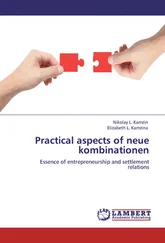1 Cover
2 Dedication To Baptiste, Maia, Léa and Louise, may their visions and plans come true To Sylvie, constant source of inspiration.
3 Title page Smart Innovation Set coordinated by Dimitri Uzunidis Volume 32
4 Copyright First published 2020 in Great Britain and the United States by ISTE Ltd and John Wiley & Sons, Inc. Apart from any fair dealing for the purposes of research or private study, or criticism or review, as permitted under the Copyright, Designs and Patents Act 1988, this publication may only be reproduced, stored or transmitted, in any form or by any means, with the prior permission in writing of the publishers, or in the case of reprographic reproduction in accordance with the terms and licenses issued by the CLA. Enquiries concerning reproduction outside these terms should be sent to the publishers at the undermentioned address: ISTE Ltd 27-37 St George’s Road London SW19 4EU UK www.iste.co.uk John Wiley & Sons, Inc. 111 River Street Hoboken, NJ 07030 USA www.wiley.com © ISTE Ltd 2020 The rights of Marcos Lima to be identified as the author of this work have been asserted by him in accordance with the Copyright, Designs and Patents Act 1988. Library of Congress Control Number: 2020945629 British Library Cataloguing-in-Publication Data A CIP record for this book is available from the British Library ISBN 978-1-78630-622-7
5 Introduction
6 1 E&I Education: An Overview
1.1. Defining entrepreneurship and innovation
1.2. Innovation and entrepreneurship education
1.3. Can entrepreneurship be taught? Towards a framework of E&I education
1.4. Collaborative Interactivity learning principles
7 2 From Idea to Vision
2.1. Self-knowledge: follow thy passion
2.2. Knowledge of the business field
2.3. Relationship networks
2.4. Other factors contributing to the development of the vision
2.5. Teaching the visionary theory
8 3 From Vision to Business Plan
3.1. Executive summary
3.2. Context: vision development
3.3. Literature review
3.4. Market analysis
3.5. Marketing plan
3.6. Organizational strengths and weaknesses
3.7. Other sources of competitive strengths and weaknesses
3.8. Strategy and development plan: the TOWS matrix
3.9. Financial objectives
3.10. Conclusions and perspectives
3.11. Appendices and References
3.12. Teaching business planning
9 4 From Business Plan to Business Model
4.1. Business models and business model artifacts
4.2. Claimed benefits and criticism of the BMC
4.3. Value flow in the Business Model Canvas
4.4. Sources of business model innovation
4.5. Visualizing business model innovation
4.6. Business modeling and the principle of effectuation
4.7. Testing business model innovations
4.8. Teaching business model innovation
10 5 From Business Model Design to Design Thinking and Lean Startup
5.1. New product development: the traditional stage-gate approach
5.2. Customer development
5.3. Design thinking
5.4. Lean startup
5.5. Teaching Design Thinking and Lean Startup
11 6 Scaling Up: The Challenges of Knowledge Management
6.1. An overview of management systems
6.2. The 7S framework for organizational analysis
6.3. Towards a framework for innovative knowledge management
6.4. Applying Terra’s framework: best practices from leading companies
6.5. Knowledge management in the ecosystem: Quintuple Helix and stakeholder maps
6.6. Teaching and learning knowledge management
12 7 Epilogue: Insights from Twenty Years of Teaching E&I
7.1. Learning by reflecting about authentic situations
7.2. Learning by collaboration
7.3. Learning by interacting through technology
7.4. Learning by exploring the ecosystem
7.5. From idea to market: innovative business development frameworks
13 Appendices
Appendix 1: List of Tools and Frameworks Used in the Book
Appendix 2: Framework for Evaluating the Effectiveness of Entrepreneurship Teaching
Appendix 3: Sources of Secondary Data
Appendix 4: Franco-Russian Research Project on the Perceived Relevance of Design Thinking Education
14 References
15 Index
16 End User License Agreement
1 Chapter 1 Figure 1.1. Business management versus entrepreneurship education (adapted from ...
Figure 1.2. Differences between entrepreneurship education and training (adapted...
Figure 1.3. University–enterprise interface and the entrepreneurial ecosystem (a...
Figure 1.4. The Quadruple/Quintuple Helix models (adapted from Carayannis et al....
Figure 1.5. Key questions in entrepreneurship education (adapted from Fayolle an...
Figure 1.6. Framework for evaluating effectiveness of entrepreneurship education...
Figure 1.7. Enablers of the entrepreneurial environment at University of Corsica...
Figure 1.8. Concept of Collaborative Interactivity (adapted from Lima 2003). For...
2 Chapter 2Figure 2.1. Progression from emergent to central to complementary visions (based...Figure 2.2. Relationship between elements supporting the entrepreneur’s visionar...Figure 2.3. Lead users develop a solution to a deeply felt need before it is com...
3 Chapter 3Figure 3.1. Elements of a funnel-like literature review structure (developed by ...Figure 3.2. Market analysis: from the marketing environment to the marketing mix...Figure 3.3. The Political, Economic, Socio-Cultural, Technological, Environmenta...Figure 3.4. Porter’s extended rivalry model (1980). For a color version of the f...Figure 3.5. Segmentation–targeting–positioning process. For a color version of t...Figure 3.6. Example of perceptual map for the segmentation table above. For a co...Figure 3.7. The 4Ps of product marketing and the 3Ps of service marketing. For a...Figure 3.8. McKinsey’s 7S framework. For a color version of the figure, see http...Figure 3.9. Value Chain model (adapted from Porter 1980). For a color version of...Figure 3.10. TOWS matrix with offensive and defensive strategies. For a color ve...Figure 3.11. Example of a Google Docs shared sheet as a peer-review dashboard. F...
4 Chapter 4Figure 4.1. The Business Model Canvas (adapted from Osterwalder and Pigneur, 201...Figure 4.2. Value flow in the ontology diagram of the Business Model Canvas (ada...Figure 4.3. Value delivery system (adapted from Lanning and Michaels 1988). For ...Figure 4.4. Iterative approach between the value creation and value delivery sid...Figure 4.5. Equivalence between 7P framework and the right side of the BMC. For ...Figure 4.6. An example of a color-coded multiple-sided business model: Google Se...Figure 4.7. Tidd and Bessant’s innovation wheel (adapted from Tidd and Bessant 2...Figure 4.8. Adoption rate of disruptive innovations (adapted from Christensen 19...Figure 4.9. Tidd’s 4Ps (2013) associated with Osterwalder and Pigneur’s (2010) i...Figure 4.10. The effectuation process (adapted from the Society for effectual Ac...Figure 4.11. Four key questions to ask about any innovation opportunity (adapted...Figure 4.12. Collaborative dashboard to create multiple-role teams for innovatio...
5 Chapter 5Figure 5.1. The stage-gate system (adapted from Cooper 1990). For a color versio...Figure 5.2. The Customer Development Model (Blank 2020). For a color version of ...Figure 5.3. Design Thinking and Lean Startup approaches to innovation (adapted f...Figure 5.4. Traditional organizational learning and innovation (based on Lima 19...Figure 5.5. Learning in an organization embedded with DT principles. For a color...Figure 5.6. Design Thinking stages (adapted from the d.school framework, Stanfor...Figure 5.7. Lean Startup cycle (Ries, 2011). For a color version of the figure, ...Figure 5.8. Simplified design sprint stages (adapted from Knapp et al. 2016). Fo...Figure 5.9. Example of CJM created by student Manon Ray and a group of colleague...
Читать дальше












